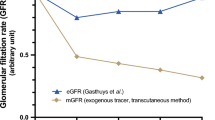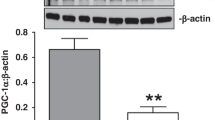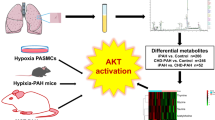Abstract
ABSTRACT. This report analyzes the effect on pulmonary vascular structure and function in the newborn guinea pig of chronic fetal hypoxemia, induced by maternal hypobaric hypoxia (380-420 torr) without direct interference with the utero-placental blood flow. Six pregnant guinea pigs were maintained in hypobaric chambers, 10 newborns from their litters being the hypoxic group. Twenty newborns from the litters of 10 pregnant guinea pigs maintained in air were the control group. After spontaneous delivery catheters were placed in the left carotid and the main pulmonary arteries of the newborns. Oxygen consumption was measured, pressures recorded from the pulmonary artery, right ventricle, and right atrium, oxygen saturation and hemoglobin concentration estimated on blood from systemic arteries, pulmonary artery, and right atrium, and cardiac output calculated (Fick principle). All data were normalized per kilogram body weight. Morphometric analysis of the pulmonary vasculature after injection of the pulmonary arteries showed no difference between the groups. Contrary to expectation chronic hypoxemia in utero did not cause pulmonary hypertension or the precocious muscularization of the precapillary unit found in human cases of persistent pulmonary hypertension: it caused growth retardation, a feature not typical of the human syndrome.
Similar content being viewed by others
Log in or create a free account to read this content
Gain free access to this article, as well as selected content from this journal and more on nature.com
or
Author information
Authors and Affiliations
Rights and permissions
About this article
Cite this article
Murphy, J., Aronovitz, M. & Reid, L. Effects of Chronic in Utero Hypoxia on the Pulmonary Vasculature of the Newborn Guinea Pig. Pediatr Res 20, 292–295 (1986). https://doi.org/10.1203/00006450-198604000-00003
Received:
Accepted:
Issue date:
DOI: https://doi.org/10.1203/00006450-198604000-00003



